
The toxic truth
Lead poisoning is particularly pervasive in poorer countries, affecting one in three children worldwide. The powerful neurotoxin has been linked to lower IQs and increased crime rates.
Lead poisoning is one of the most easily preventable environmental health hazards, yet it remains a major threat to the well-being of babies and children around the world.
As little as five micrograms of lead per decilitre of blood can have a profound impact on children. Those under the age of six are particularly susceptible. About 800 million children have high levels of lead in their blood, according to a study released in July by Unicef and Pure Earth.
Childhood health hazards
Blood Lead Levels (micrograms per decilitre)
Symptoms
Symptoms
Symptoms
Long-term effects
Lead is a potent neurotoxin that is particularly harmful to babies and children. It affects the brain’s development, causing reduced IQ, lower educational attainment and behavioural disorders.
Two long-term studies of children growing up in an era of leaded petrol indicate that high blood lead levels in childhood resulted in lower IQ scores in adulthood and possibly increased tendencies to commit violent crime.
Bad blood
How high blood lead levels affect a person’s IQ.
Long-term criminal behaviour studies
The charts below show the average blood lead levels recorded in childhood across four developed economies. The red line shows the crime rate 19 years later. There may be other factors involved but the closely aligned trajectories make a compelling case to link high blood lead levels in children with criminality in later life.
Where does toxic waste end up?
Electronic waste is the world’s fastest growing form of toxic waste and one of the main sources of lead exposure in poor regions. Around 80 per cent of e-waste is shipped, often illegally, from wealthy countries to low- and middle-income countries where workers in informal recycling industries, including children, are exposed.
Illegal e-waste trafficking


The cross-border transfer of toxic waste from developed countries to developing countries is banned under international law. There is, however, a robust illegal trade because it is more expensive to legally recycle e-waste than it is to ship and dump it overseas.
Global lead exposure
Blood lead levels have declined in high-income countries since the phasing out of leaded products, but for people in low- and middle-income countries, blood lead levels continue to be high.
Dangerous blood lead levels in children globally, 2019
Sources of lead exposure
The main sources of exposure to lead used to be from paint and petrol but health warnings and greater awareness in the West forced manufacturers to reduce or remove lead from their products entirely. Now, lead turns up in a wealth of other less obvious areas of people's daily lives, especially in poorer households around the world.
Hong Kong has had its fair share of lead poisoning problems in recent years, from the tainted water scandals of 2015 and 2018 to more recent accusations that the Hong Kong Gun Club is polluting the Shing Mun Reservoir catchment area with lead pellets and plastic.
Where is lead found?











Communities built near contaminated industrial sites — particularly lead-acid battery recycling facilities — are bathed in toxic air. This means many poorer sections of society are exposed to e-waste and dust, forced to eat produce grown in contaminated soil, and drink water tainted with harmful chemicals.
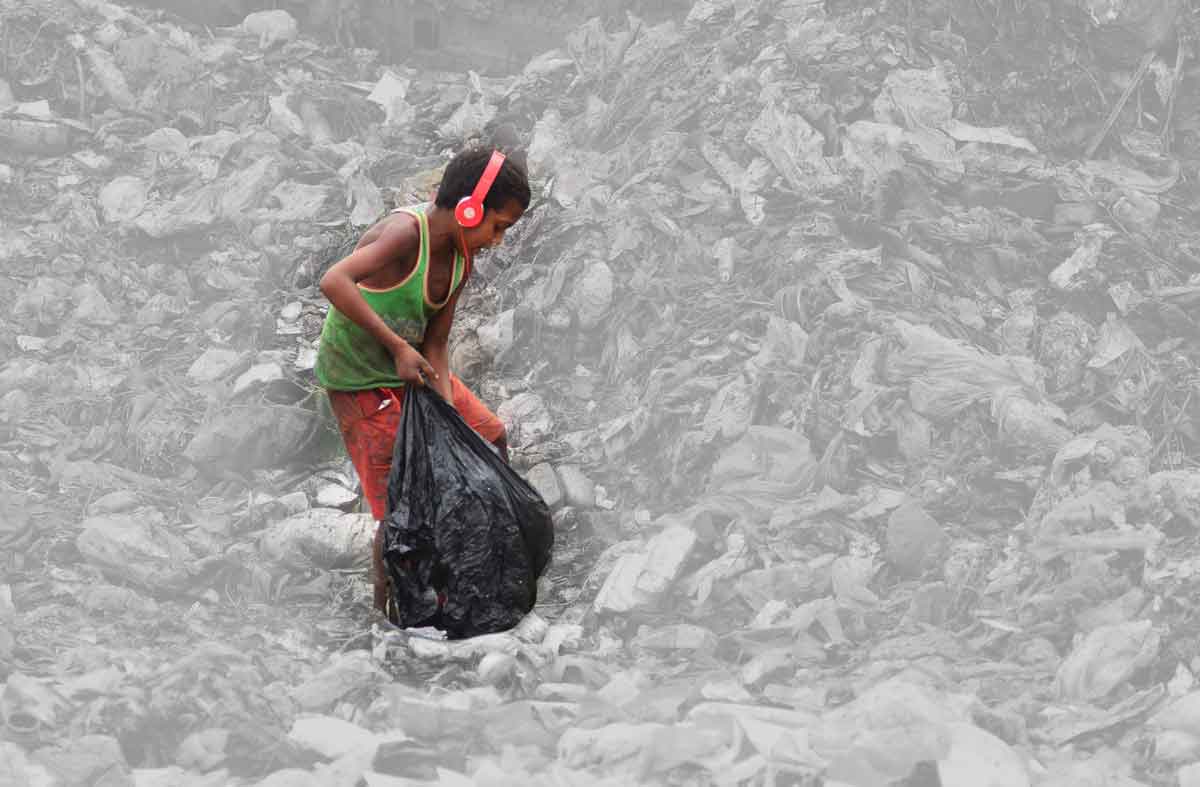
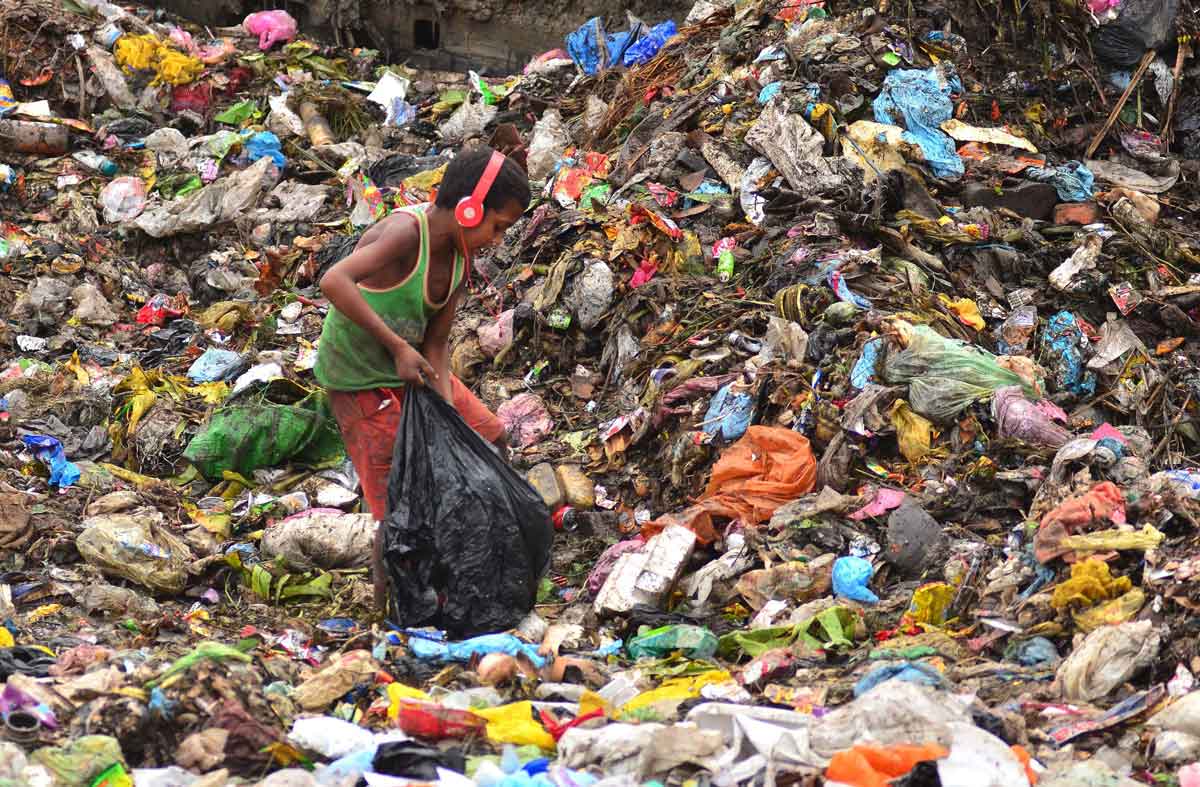











Communities built near contaminated industrial sites — particularly lead-acid battery recycling facilities — are bathed in toxic air. This means many poorer sections of society are exposed to e-waste and dust, forced to eat produce grown in contaminated soil, and drink water tainted with harmful chemicals.











Communities built near contaminated industrial sites — particularly lead-acid battery recycling facilities — are bathed in toxic air. This means many poorer sections of society are exposed to e-waste and dust, forced to eat produce grown in contaminated soil, and drink water tainted with harmful chemicals.
Next generation
Passing on certain old toys to children can pose a risk to their health because many vintage toys contain toxic metals, particularly lead, in the paint, metal, and even some plastic parts.
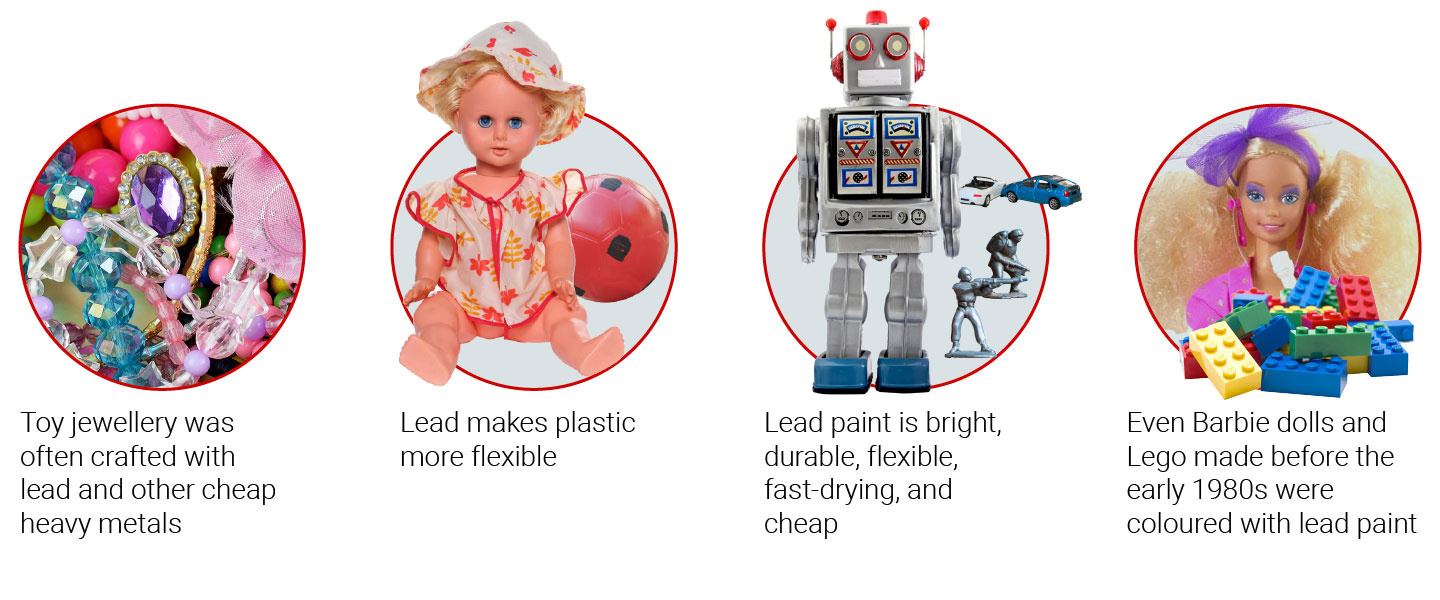

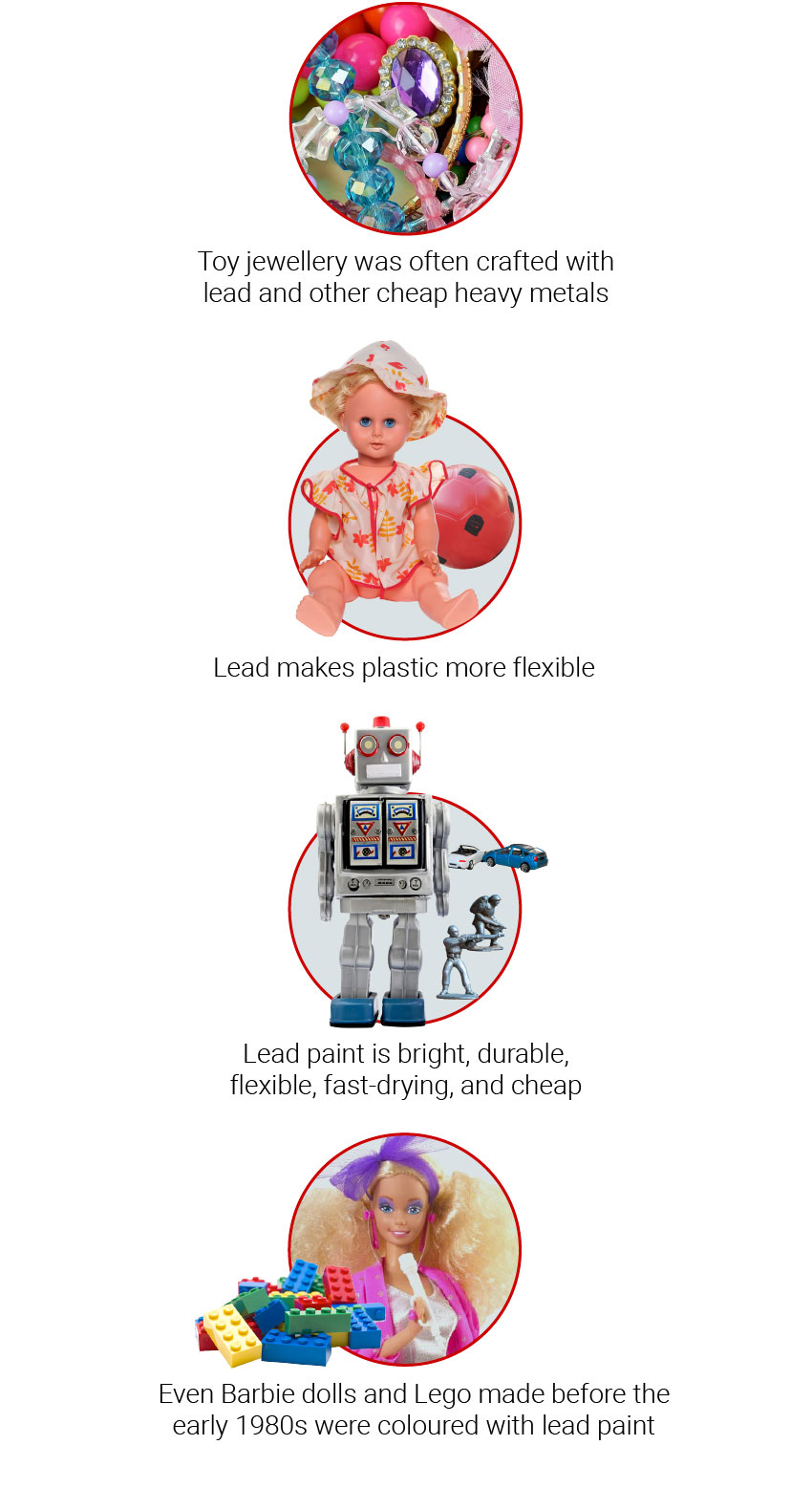
According to the World Health Organization, as of May 31, 2020, only 39 per cent of countries (including China) have confirmed that they have legally binding controls on the production, import, sale and use of lead paints.
China’s e-waste problem
China began introducing legal provisions to stop the importation of e-waste from computers, mobile phones, and other electronics in the 1990s, but it only began enforcing the ban in the early 2000s. It is now the world’s largest generator of e-waste and although China increasingly treats and recycles domestic waste materials, large quantities of e-waste continue to enter the country illegally, according to NGO investigations.
Top 25 e-waste generating countries, 2019
(million tonnes)Before Beijing cracked down on importing e-waste, and prior to the Guiyu National Circular Economy Industry Park becoming fully operational in late 2015, the Guangdong town of Guiyu was widely seen as a global hub for the e-waste trade, and was thought to be the world’s largest e-waste dump. With more than 5,000 family-run recycling workshops scattered across the town emitting noxious fumes and other pollutants, it is reported that children living in Guiyu had significantly high blood lead levels (7.06 micrograms per decilitre).
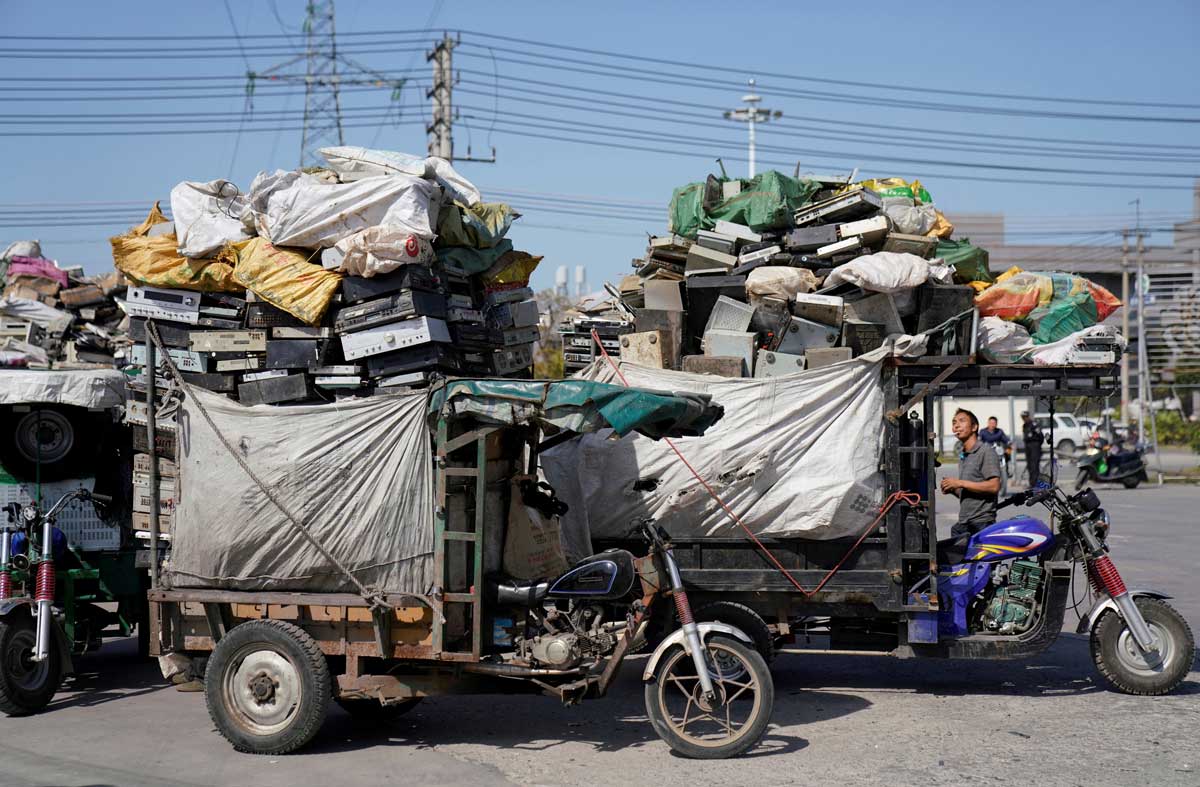
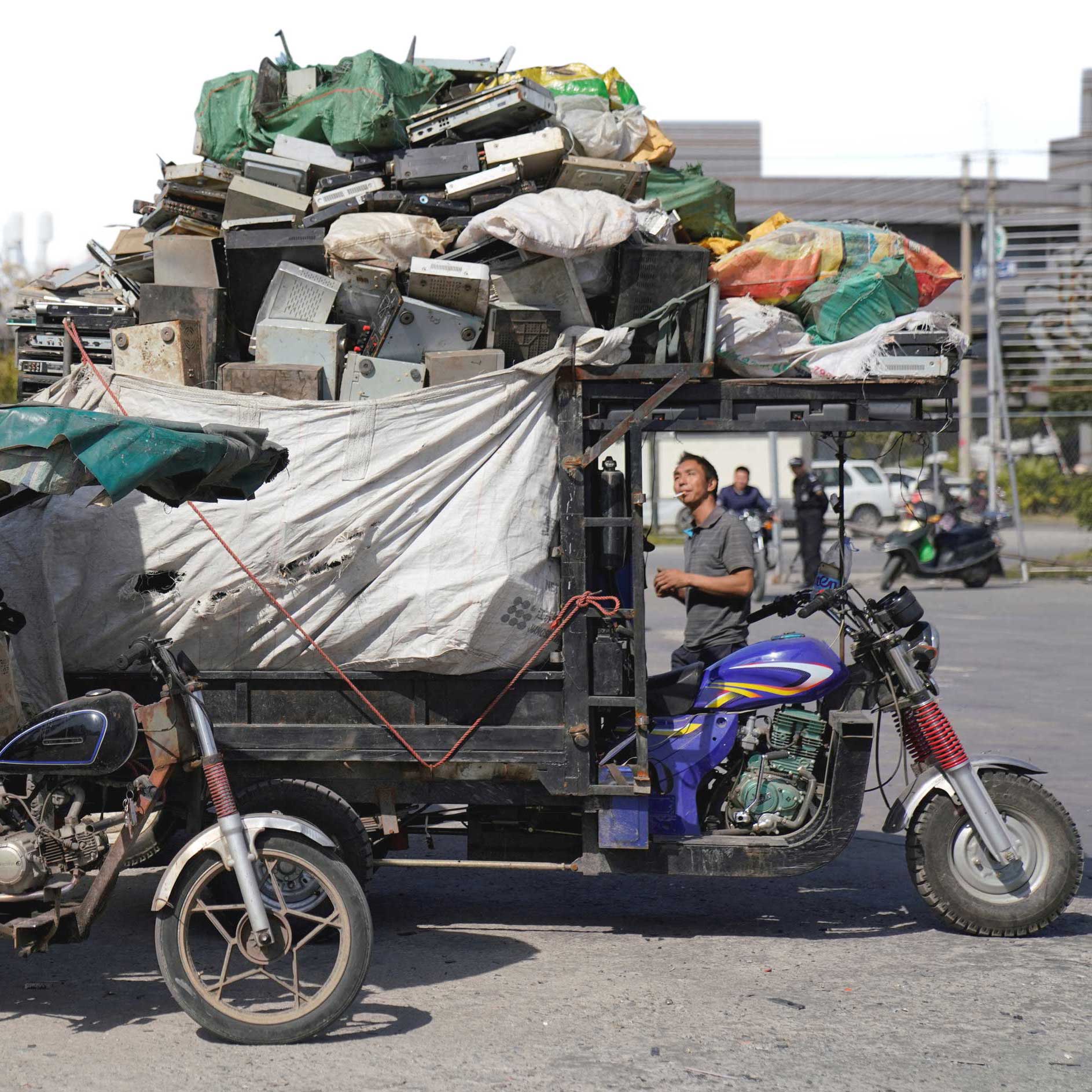

Children’s average blood lead levels by country 2019
With rising governmental awareness of the environmental and health consequences, Beijing has passed new laws and regulations to address the issue. The amount of legally imported e-waste has declined substantially, but much continues to find its way into China through illegal means.
Creative Director Darren Long.
Photos: AFP, Reuters
Sources: The Toxic Truth: Children’s Exposure to Lead Pollution Undermines a Generation of Future Potential, UNICEF, Pure Earth, The Unz Review, Rick Nevin, Institute for Health Metrics and Evaluation, The Global E-waste Monitor 2020, BBC